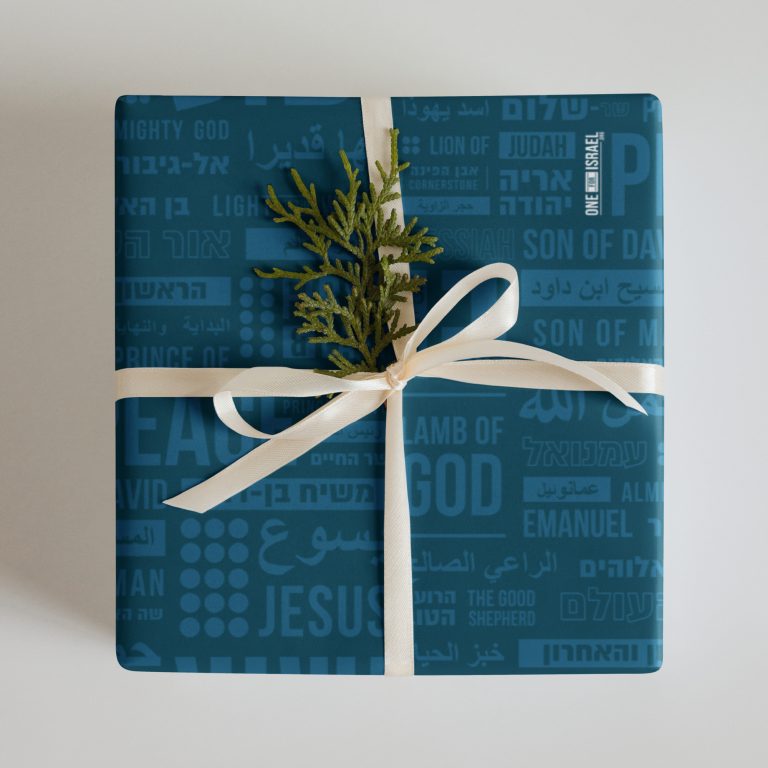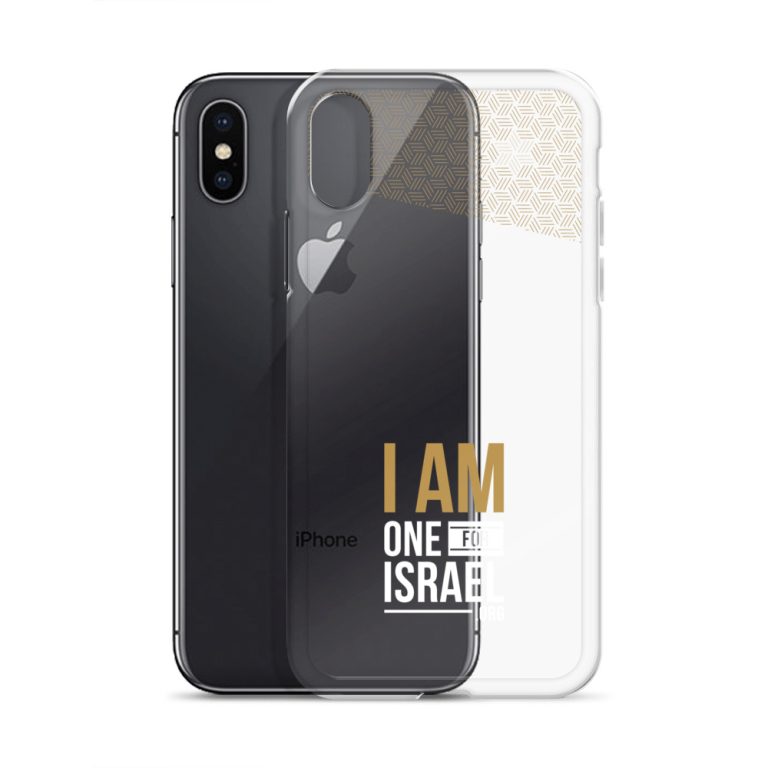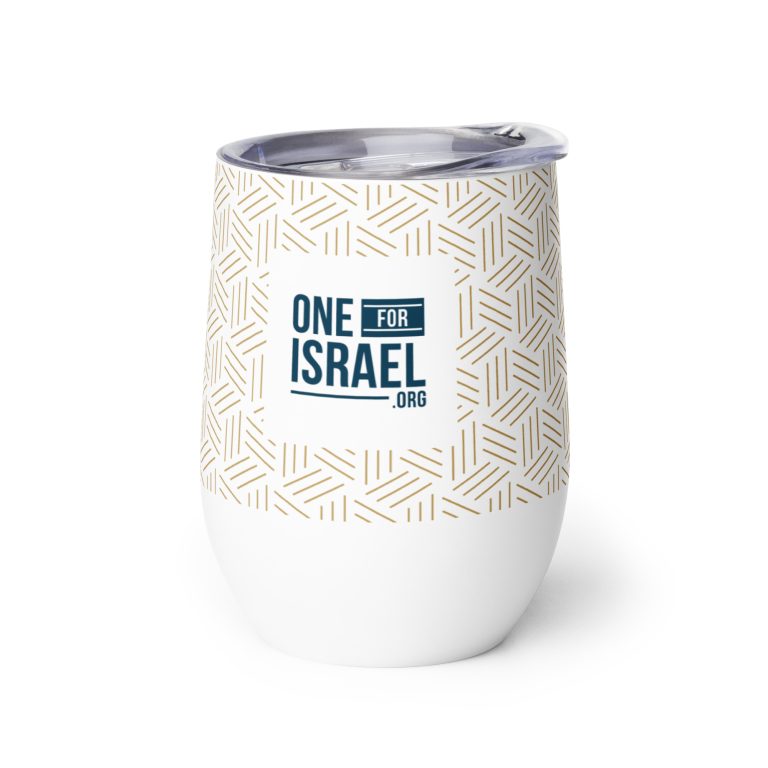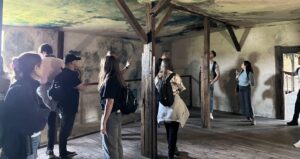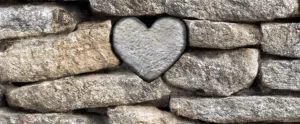“The colour immediately attracted our attention, but we found it hard to believe that we had found true purple from such an ancient period”.
Professor Erez Ben Yosef from Tel Aviv University and an expert in Iron Age was thrilled to share what they’d found here in Israel.1
Ongoing excavation work has been revealing all sorts of treasures in the Timna Valley, which lies between Jerusalem and the Red Sea. Timna hosts ancient copper mines, thought to have belonged to King Solomon at one point,2 and today you can visit a life-size model of the Tabernacle there. Which turns out to be not an insignificant detail, as we shall see.
More than that, experts have just announced that they have discovered a purple dye production plant on the Carmel coast of northern Israel.
When purple is more precious than gold
Professor Ben Yosef said there was real excitement when they got the results from the lab – it showed the ancient fabric was dyed with what is known as “true purple”, and was the oldest evidence of it in Israel.
Indeed it is the only example of this extremely precious dyed fabric from David and Solomon’s era.
This ancient dye costs $2,700 per gram and was once 15 times more valuable than gold.3 Why so costly? The pigment is extracted in a complex and time-consuming process from the gland of a particular sea snail (it takes 120 pounds of Murex molluscs to make just one gram of the dye). This labour-intensive process was developed by the ancient seafaring Phoenicians, making them rich traders around Israel and the Mediterranean.
Dr Naama Sukenik explained, “until the current discovery, we had only encountered mollusc-shell waste and potsherds with patches of dye, which provided evidence of the purple industry in the Iron Age… Now, for the first time, we have direct evidence of the dyed fabrics themselves, preserved for some 3,000 years.”4
Thanks to the extreme dry, desert climate that preserved the Dead Sea Scrolls for thousands of years, we now have a fragment of purple cloth from the era of David and Solomon in remarkably good shape.
More than that, the factory that would have supplied the fabric has recently been found near Haifa, at Tel Shiqmona, in northern Israel. The results of new research was published in the PLOS ONE journal on April 23, 2025, showing that experts have identified the tools used for the extraction and production of purple cloth.5 They found over 150 artifacts including ancient stone implements and rims of vats with residue of the dye.
“Before our research, we had no evidence of how the dye was produced prior to the Roman period,” said Dr. Golan Shalvi. “It was a mystery.” However now scholars can see how it was done. “The workers would collect the snail glands in these ceramic vats, prepare the solution of the dye and immerse the fleece or threads into the dye,” Shalvi said.
The research paper revealed that the dye was produced in Israel as early as 1,100 BC and up to the 6th century BC. Prof. Ayelet Gilboa from the University of Haifa explained, “Tel Shiqmona offers evidence that already in the 9th century BCE, purple dye was produced at an industrial scale. It was not just one individual dyeing a garment for a king.”
“We uncovered substantial evidence of trade with Cyprus from this period,” she continued. “In my view, Tel Shiqmona is also the strongest candidate for having supplied the First Temple in Jerusalem.”
The biblical significance
Professor Erez Ben Yosef said that the Timna discovery back in 2021 helps to verify the historicity of the biblical text. For example, we are told that the kings of Midian wore this purple in the story of Gideon (when he received booty after their victory over the Midianites – see Judges 8:26). This might have seemed unlikely given the fact that the Midianites came from the Arabian peninsula and Tyrian purple was traded in the Mediterranean area, with trading centers in Lebanon, Syria, northern Israel, but most importantly Tyre. However, having found the 3000 year old fragment all the way down in Timna, not far from Midian, the account in Judges becomes very credible.
We also read of this dye many times in relation to the Tabernacle and the priestly outfits. The first mention is of the contributions received from the Israelites to construct the Tabernacle:
“Gold, silver and bronze; blue, purple and scarlet cloth” (Exodus 25:3-4)
These colors are mentioned repeatedly throughout the descriptions in Exodus:
blue, purple and scarlet.
Interestingly, the blue and the purple both come from the same shellfish dye, but are exposed to different amounts of light. In Hebrew, they are called Techelet (blue) and Argaman (purple).
Techelet (תְכֵלֶת) – azure, a bright blue colour, found on the flag of Israel, Techelet is made with Tyrian dye that has been exposed to more light. It signifies the divine, the heavenly.
Argaman (אַרְגָּמָן) – true, royal purple, also made with Tyrian dye but with less exposure to light. This color represents royalty, wealth, and status.
The Hebrew word for red is from the same root as man and blood (adom, Adam, and dam), however when these three (blue, purple and scarlet) appear in the description of the Tabernacle, a different word for red is used:
Sheni (שָׁנִי) – a scarlet red. This word for red, or scarlet, is also used in the description of Zerah’s ankle cord, ancestor of the Messiah, and in the color of Rahab’s rope. These connections help us understand that this red has to do with God’s plan to redeem mankind.
Red represents mankind, blue the heavens, and purple…
The tricolour combo is mentioned over and over again in Exodus concerning God’s tabernacle and priestly garments. In Exodus 28:33-34 we read some of the requirements for these three colors along with bells and pomegranates alternating:
On its hem you shall make pomegranates of blue and purple and scarlet yarns, around its hem, with bells of gold between them, a golden bell and a pomegranate, a golden bell and a pomegranate, around the hem of the robe.
The three colors were to be used in all of the curtains, the hangings, and the all-important veil dividing the inner Holy Place from the Holy of Holies where the Ark of the Covenant was kept. However, there are some occasions where one pure color is called for. The ark itself, for example, had to be covered only in blue:
Whenever the camp is about to move out, Aaron and his sons are to take down the shielding curtain and cover the Ark of the Testimony with it. Then they are to cover this with porpoise hide, then spread over it a cloth of solid blue. (Numbers 4:5-6)
Similarly, we read further down in the chapter, that the altar outside the tent, where all the sacrifices were slaughtered and offered, had to be covered in pure purple:
They are to remove the ashes from the altar, then spread over it a purple cloth. (Numbers 4:13)
So this argaman purple was the color not just of royalty, but also priesthood. In antiquity it denoted significance, status and wealth. In fact there were times historically where you were not permitted to wear it, because it was reserved only for rulers! As well as being used in the Tabernacle and holy raiments, we see Argaman purple connected to kings, such as in the story of Esther, and the carriage of King Solomon himself:
King Solomon has made for himself
a carriage from the trees of Lebanon.
He made its posts of silver, its back of gold,
its seat of purple cloth,
its interior fitted out with love
by the daughters of Jerusalem.
(Song of Solomon 3:9-10)
Jesus was draped in pure argaman purple
Today it still carries connotations of royalty and priesthood. Some churches use it at the time of year leading up to the crucifixion, remembering the royal purple robe that Pilate mockingly had Jesus draped in before He was led out to die:
Then Pilate took Yeshua and had Him scourged. The soldiers twisted together a crown of thorns and put it on His head, and dressed Him in a purple robe. They kept coming up to Him, saying, “Hail, King of the Jews!” and slapping Him over and over. (John 19:1-3)
Clothes are a symbol of identity, and this robe signified so much about who Jesus is at that pivotal time.6 Though done with evil intent, this action shouts loud and clear about the significance of the wicked act Pilate tried to wash his hands of.
Purple was draped on the sacrificial altar, pointing to that moment in front of Pontius Pilate over a thousand years before it happened. It showed us that Jesus is the ultimate sacrifice, shedding His own blood for our sin, so we could enter the Holy Place of God’s presence.
Purple is both blue and red together, expressing the divinity and humanity of our Messiah.
Purple shows that He is our High Priest.
Purple shows that He is King.
Jesus deserves the highest honor, all the praise, and all glory.
- BBC, Israeli archaeologists find ‘Biblical royal purple dye’ 29th January 2021
- Holy Land Uncovered – i24NEWS
- https://www.middleeasteye.net/discover/colour-purple-dyeing-techniques-phoenician-sea-snails
- The Independent, Purple dye ‘more precious than gold’ found in Biblical-era fabric by Israeli archaeologists, Andy Gregory, Saturday 30 January 2021
- https://www.timesofisrael.com/made-from-snails-and-fit-for-kings-first-biblical-era-dye-factory-found-on-israels-coast/
- Thomas Fretwell, Theology & Apologetics: Biblical Archaeology: The King’s Robe



